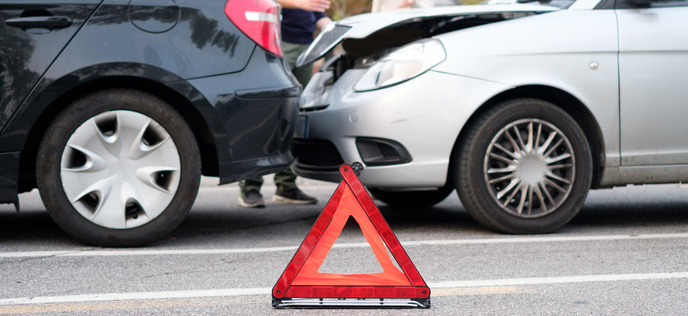


The impact of an accident involving a fleet vehicle can reverberate throughout your organisation, from vehicle repairs and insurance costs, to lost sales, productivity, and legal issues. It’s estimated that the direct and indirect cost can run from four to 20 times the cost of the actual vehicle repair*.
Smartfleet’s Accident Management program is a vital tool for minimising the cost and organisational impact of fleet vehicle accidents, reducing downtime and offers insights that may help reduce the occurrence of accidents in the future.
Complete accident management, 24/7, Australia-wide
The most common fleet accidents involve a single vehicle and/or hitting stationary objects. But whether it’s an accident involving an animal, damage whilst parked or something more serious, our customer care team is on standby to assist with:
Our technology does the driving
Take nothing away from our customer care team - they’re the people you want beside you when things go wrong. But it’s the technology they leverage that makes Smartfleet’s Accident Management program so vital and cost effective.
For example, our mobile app allows for fast incident reporting and response, and our online portal gives you complete visibility of your fleet’s program, from checking the progress of current cases to reporting and analytics that allows you to identify incident trends and implement strategies to help reduce accidents and the associated costs to your organisation.
Don’t wait for the next accident…
After an uncertain 18 months, Australian businesses are taking to the roads again – along with millions of other road users. Having Smartfleet’s Accident Management program in place could help reduce the occurrence and impact of accidents on not only your fleet, but your entire organisation.
To learn more about accident management for your organisation, speak with your Client Relationship Manager today.
*References:
Anderson, L. (2002). ‘Opening Address’ in Murray & Hansen (eds.) Proceedings of the Symposium on Work-related Road Trauma and Fleet Risk Management in Australia, Brisbane, 10-12.
Bureau of Transport Economics. (2000). Road Crash Costs in Australia (Report 102). Canberra: Commonwealth of Australia.
Miller, T., Cohen, M. & Rossman, S, (1993). Victim costs of violent crime and resulting injuries. Health Affairs, Winter, 186-197.
Miller, T. & Galbraith, M. (1995). Estimating the costs of occupational injury in the United States. Accidental Analysis and Prevention, 27, 741-747.
Murray, W. (2002). ‘Overcoming the barriers to fleet safety in Australia’ in Murray & Hansen (eds.) Proceedings of the Symposium on Work-related Road Trauma and Fleet Risk Management in Australia, Brisbane, 64-71.
Murray, W., Newnam, S., Watson, B., Davey, J. & Schonfeld, C. (2003). Evaluating and improving fleet safety in Australia. Australian Transport Safety Bureau.
National Safety Council. (2003). Motor Vehicle Accidents Top Workers’ Comp Costs. Safety & Health, 167, 14.
Wheatley, K. (1997). An overview of issues in work-related driving. In Staysafe 36: Drivers as workers, vehicles as workplaces: Issues in fleet management. (Report No. 9/51). Ninth report of the Joint Standing Committee on Road Safety of the 51st Parliament. Sydney: Parliament of New South Wales, 15-24.